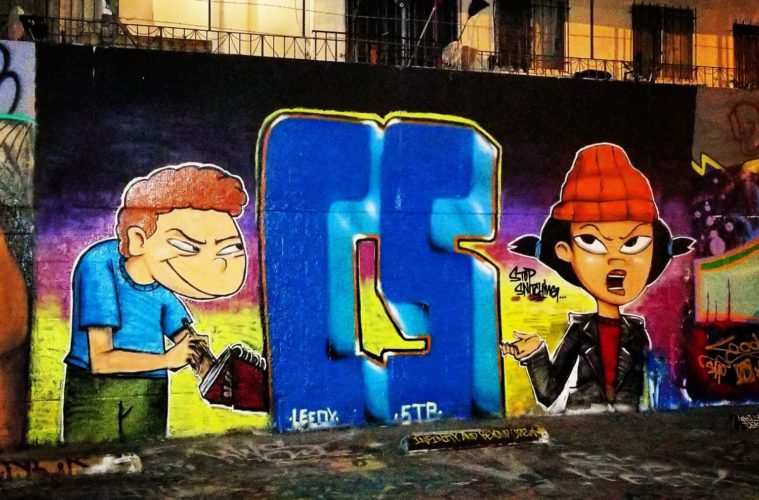With social media photo-sharing of Los Angeles graffiti going mainstream, some veterans in the local graffiti community remain lukewarm to the idea, which has taken on a life of its own with the proliferation of brand-building street art spilling into graffiti titans’ work on illegal walls. While many street artists welcome the attention and the sharing of their work, photos of unauthorized graffiti can court unwelcome attention and hangers-on.
Instagram handles in the L.A. graffiti community mention “IG ruined graffiti” and “against da Grams.” In comments, social media’s influence on graffiti is referenced, usually negatively. Days of urban purity have been hijacked, and there is plenty of mockery for toys, a term that translates, roughly, to persona-non-grata groupies foreign to the culture.
Although L.A. graffiti online documentation is nothing new – think MySpace and graffiti blogs – increased online photography sharing of illegal graffiti, around the world, without borders, visible to both friends and foes, has accelerated potential for scrutiny, not all of it good, and has given some graffiti writers reason to pause.
Local law enforcement has used Instagram, some L.A. graffiti writers say, to link illegally placed graffiti with accused individuals to help prosecute graffiti and vandalism cases. LAPD maintains that is not what happens. An LAPD representative, Drake Madison, says, “We don’t use social media as an investigative tool, or for the prosecution of graffiti and vandalism cases.”
For years, many in the L.A. graffiti community have preferred anonymity or local fame. On graffiti writers’ Instagram pages – the ones that aren’t private – faces are obscured with black boxes or hands, creating barriers in linking graffiti with names or identities. The culture has a socially insular community, built on crew traditions passed down through generations, native to the pre-suburbanized version of the city.
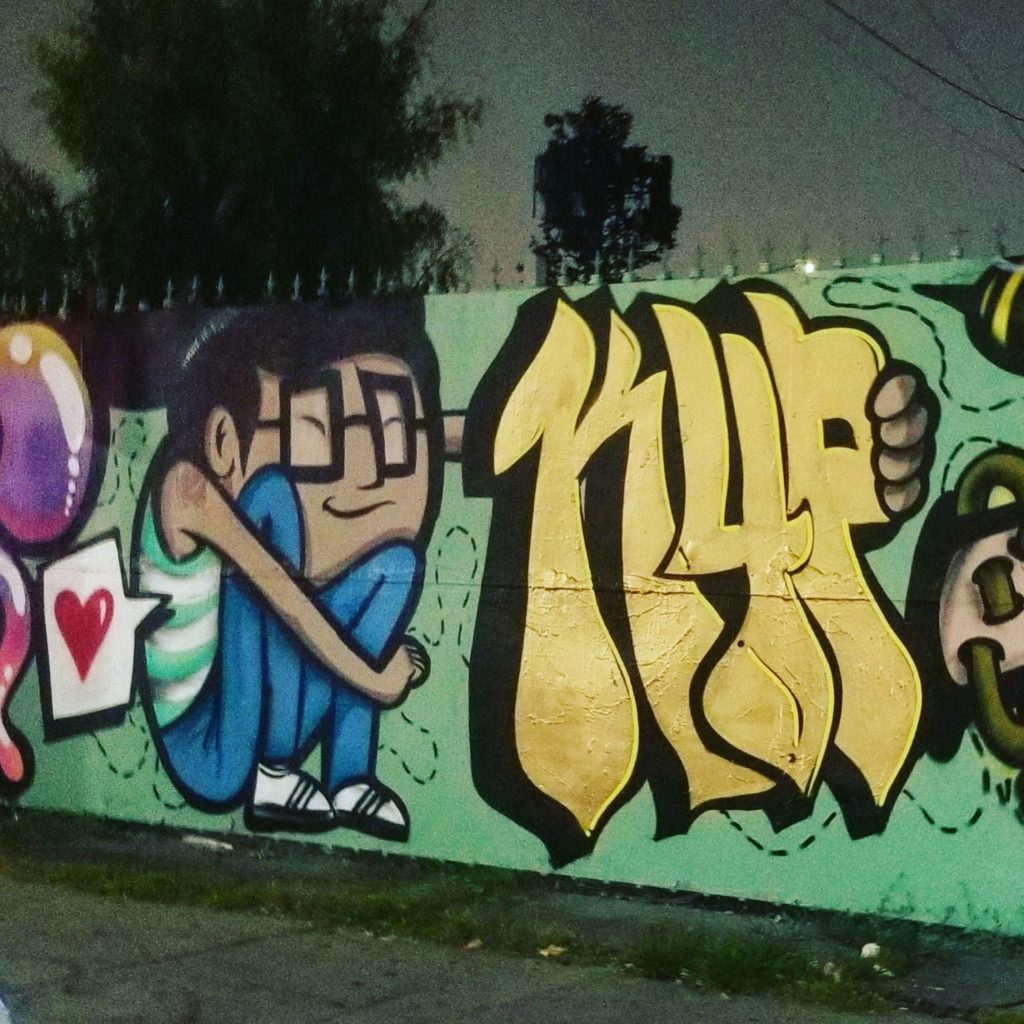
Art by Ane @aneuno from the K4P Crew (photo by Nicholas White)
South Central’s K4P crew has been painting graffiti art in their neighborhood for 30-plus years. Much of their work is unauthorized. Nonetheless, it is a fixture of the community. Its artistic value is too distinct to dismiss as vandalism. Mixing style with local pride, similarly to a youth-oriented public service, K4P is more than a crew – it’s community glue.
A wall-long K4P piece, across the street from 41st St. and Hooper Ave.’s Thomas Jefferson High School, where many of the crew’s members attended, reminds students that “knowledge forms power,” using the K4P acronym.
“The first time Google came out, I googled my name and already had pieces up there,” Zuco, a K4P crew elder, said. “It actually made me feel pretty good. A lot of people don’t come to South Central. Me, personally, it gives me a sense of acknowledgement. It makes me feel happy. All my crew loves it … when people take pictures. I tell them, ‘Just don’t take pictures of our faces.’”
Zuco, as an individual, keeps his distance from revealing any of his personal details on social media channels. He says, “I don’t really put graffiti on [my Instagram].”
In recent years, Gaso, another longtime L.A. graffiti writer and member of numerous prominent crews, has designed art on hundreds of electrical boxes around town, decorated with logos for the Dodgers, LAFD and LAPD, or as gas pumps, phone booths, city scenes and money stacks. These are widely shared on social media, with an Instagram handle (@superunleadedgasoline) on the boxes.
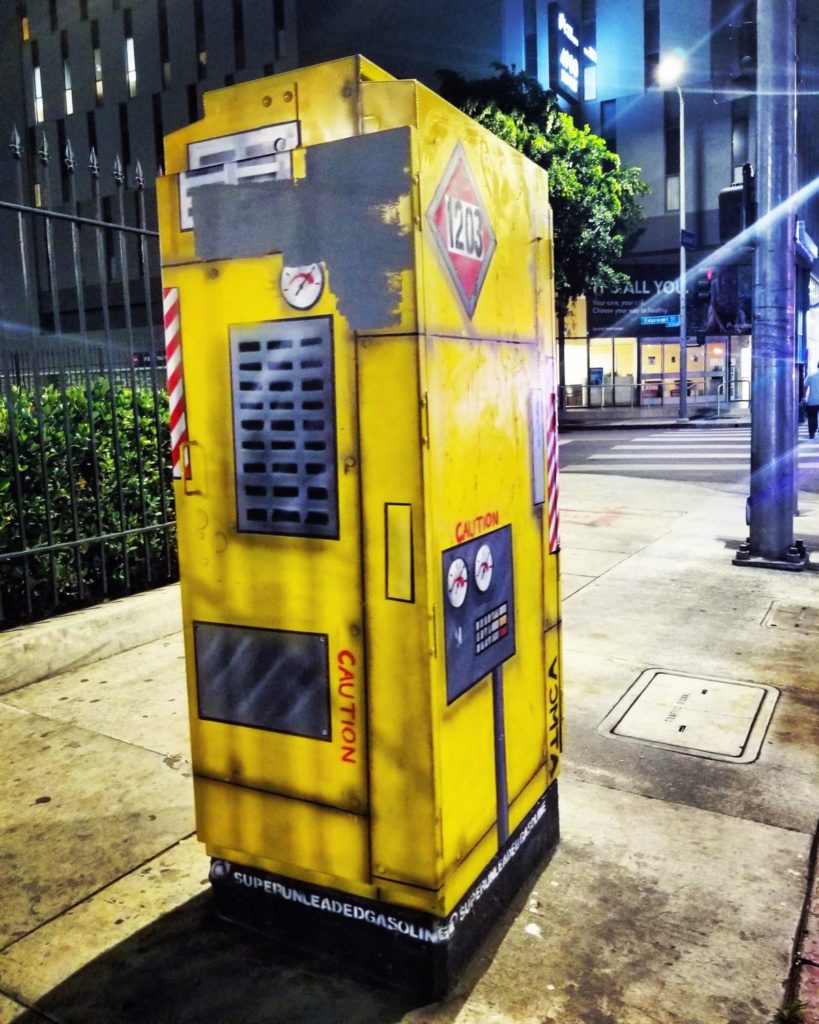
Electrical box by Gaso (Photo by Nicholas White)
Electrical box art can require several rounds of civic approvals to begin. So, Gaso did it himself, without prior approvals. “My process is different from the real process for the fact that 99 percent of my boxes are done illegally, and the city loves it, and they approve it after the fact,” Gaso said. “From an online perspective, it’s something everybody can relate to. In the city of Los Angeles … more people know my boxes than people know me.”
Gaso said of social media sharing of his electrical boxes, “All energy towards my artwork, whether it be graffiti, my [electrical] boxes or anything else I’m doing with my life, good or bad, is good for me. They might be talking bad about you. If anyone asks, what are you talking about? Who is this guy they’re talking about? Why are you talking about him? What’s he doing? Because he made a mark on society that made you want to talk about him. You’re doing something right.”
Where things can get murky is if photographs capture acts of vandalism. “I think that at the point that somebody got raided or busted, and it seemed to be linked to social media, that would be something that people pay attention to,” Steve Grody, author of the book L.A. Graffiti, said. “But it seems that people have gotten bolder and bolder because nobody has been getting busted, as far as I know.”
Active illegal graffiti writers may consider going further than just avoiding social media posts, Grody said. “If I were an active graffiti writer out on the streets, I would leave my phone at home or anything that could track my location,” Grody said.
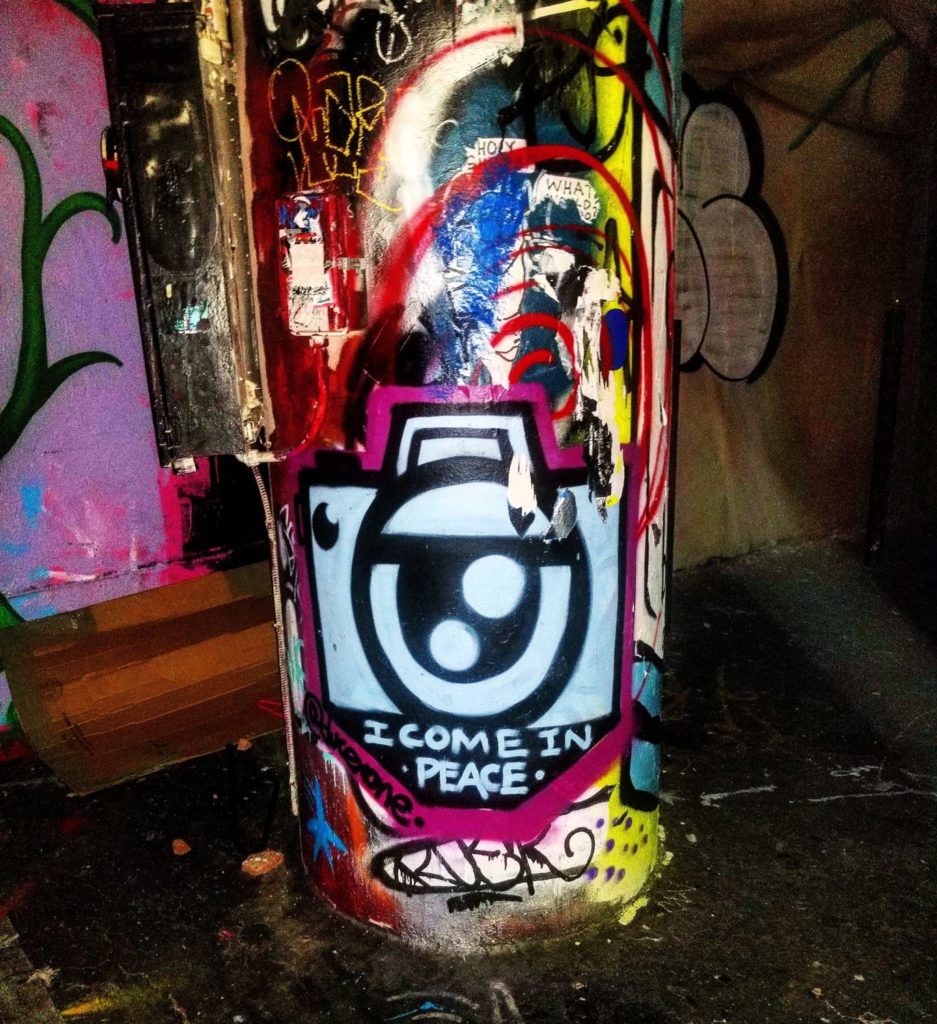
“I Come in Peace” by Duce (@ducexone). (Photo by Nicholas White)
“I think it would behoove graffiti writers to err on the side of caution,” Grody said. “If they’re out, I would say if they’re actively bombing, they should have zero on their phone, or even have their phone on them, or always be clearing their phone. It’s very easy to get too casual until the axe starts to fall. If people are going to be doing illegal stuff, it would be wise to be cautious about that.”
Grody added, “There were times in early social media where I was thinking, man, if I were in law enforcement, this would be a golden age.”
“It’s a game like that,” Choklo, a L.A. graffiti writer of eight years, said, when asked about local writers posting photos online of their illegal work. “Look at me, I’m getting away with it. I’m busting a 30-minute piece on top of a freeway sign.”
Ultimately, L.A.’s graffiti is accepted, on a case-by-case basis, block by block, by neighborhood thresholds for what belongs. Boundaries continue to push further online with no end in sight, however, to a much wider audience.
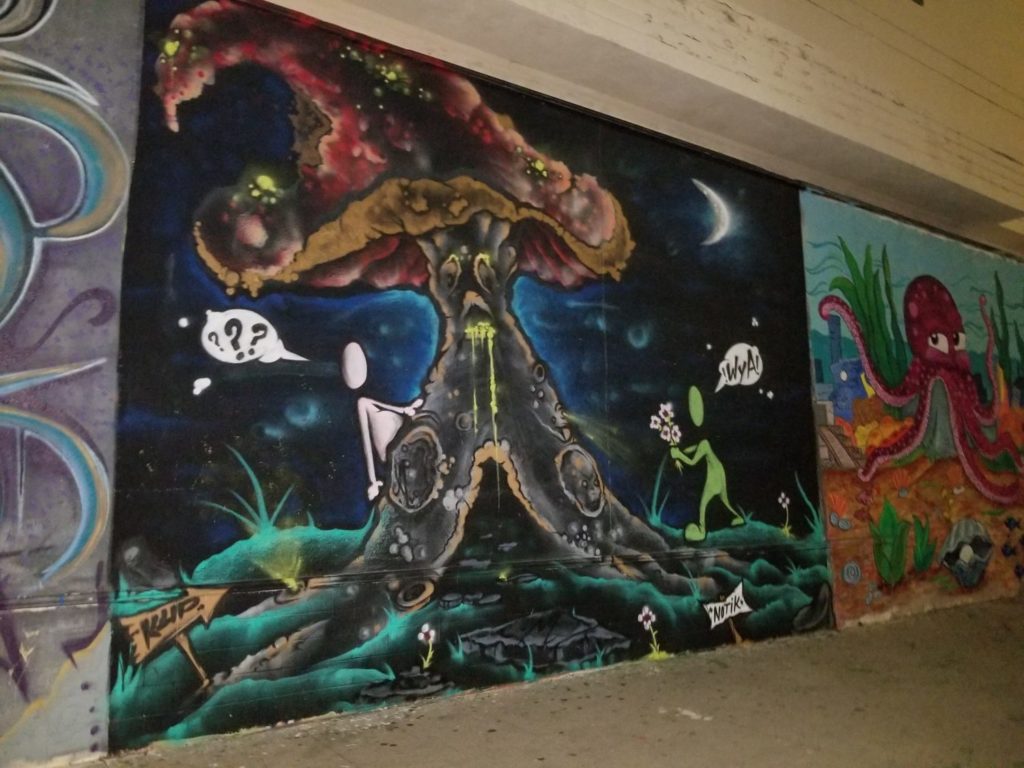
“WYA!” by K4P Crew artist Notik (@pinche_notik). (Photo by Nicholas White)
Advertising disclosure: We may receive compensation for some of the links in our stories. Thank you for supporting LA Weekly and our advertisers.

